
How do you navigate a large, multi-day vintage cast iron cookware auction? It’s easy to become overwhelmed.
Yards upon yards, and tables upon tables, showcasing all that stunning iron! And amidst the crowd are a number of seasoned auction-goers, who are just as determined as you to acquire a valuable piece at a favorable price.
I am not referring to an auction that includes a few pieces of cast iron; I am talking about an extensive collection of hundreds of vintage and antique cast iron cookware pieces being auctioned off by an auction house.
The extensive vintage cast iron cookware auction usually consists of items from long-time collectors selling off their collections or downsizing. The auctions often span several days. The pieces offered are generally in very good to excellent condition, being collector’s items.1
My First Significant Cast Iron Auction Experiences
Before I attended my first in-person auction, I had experience buying vintage cast iron cookware at garage and estate sales, flea markets, antique stores, and other vintage selling events. I had also purchased online via eBay and Craigslist.2
Northern Minnesota Farm Auction
The first large cast iron auction I attended in person was fantastic – many bids, many pieces, many people, two auctioneers working in two different areas (called “rings”) at the same time. It was held at a farm in Northern Minnesota.
I found out about the auction when I saw a flyer somewhere. It just said “cast iron cookware” would be offered at the auction. I called the number on the flyer, and the auctioneer told me that several hundred pieces of iron, in addition to all sorts of other things, would be offered.
I drove about 4 hours north for the event. I was alone, didn’t know a soul, and didn’t know much about in-person auctions. There was no organized preview of pieces; the auctioneers just got to work.
What am I doing with 60+ pieces of crusty old iron pots?
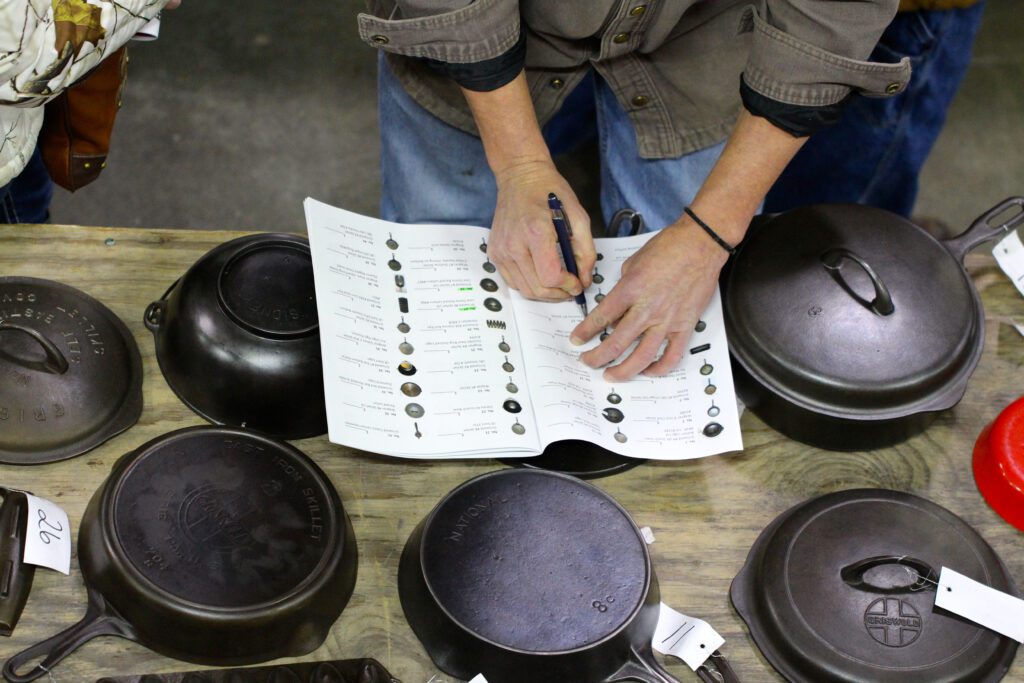
I got carried away and ended up buying over 60 crusty, rusty, dirty old cast iron pans that needed a lot of refurbishing. I don’t remember how much I paid, but I do remember that only two of us were intent on buying the iron. We took turns bidding against each other. At the end of the auction, the other bidder said to me, “There are no friends at auctions.”
Hauling the items home tested the limits of my car’s suspension, I’m sure.
While that purchase helped me learn how to restore vintage and antique cast iron cookware, it was a months-long, arduous process. Some pieces didn’t amount to much once cleaned – flaws had been buried under layers of crud.
I learned that I needed to factor in the time it would take to clean a piece when deciding how high to bid and how many pieces to buy.
Online Multi-Day Cast Iron Collector Auction
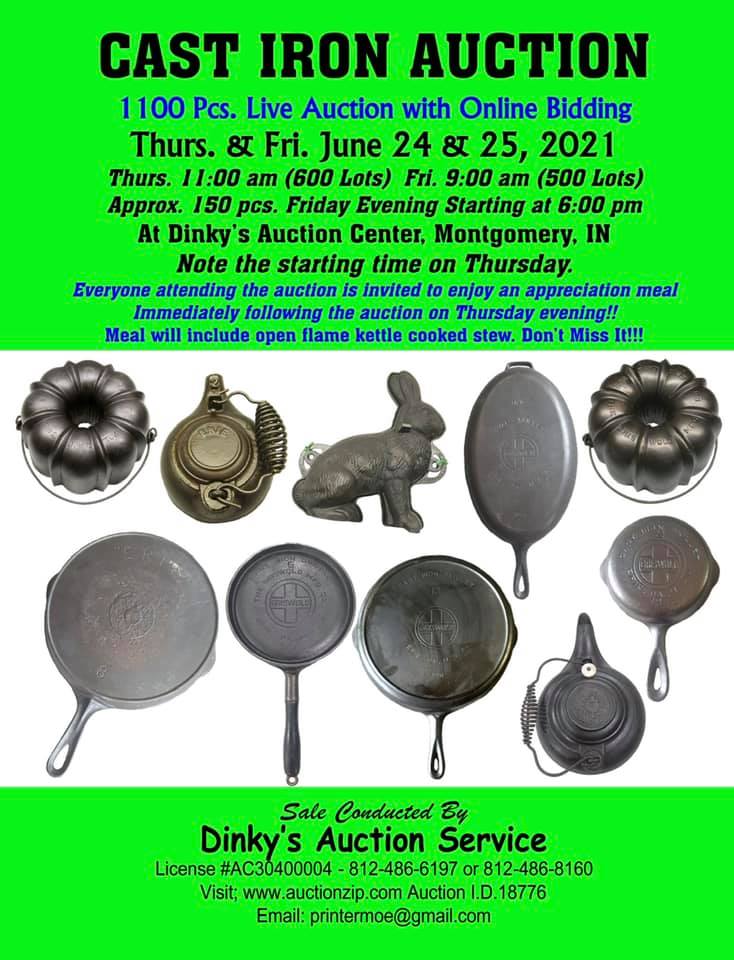
Next, I “attended” a sizeable live cast iron auction online via Proxibid.3 I could watch the auction live on my computer and place bids remotely in real time. This worked great for me, as the auction was several states away.
Again, I got carried away again and ended up purchasing more items than I had planned. The prices seemed too good to pass up, and I wanted to take advantage of the deals.
I had examined the auction catalog online before the auction began and made a list of what I was interested in and how much I was willing to pay. I carefully factored in the auction house’s “buyer’s premium.”4 I thought I was prepared.
At the end of the auction, I paid the invoice for the goods. I had to wait to learn the shipping cost and pay that expense before receiving my goods. The items would be picked up by the local UPS Store, packaged, and delivered by them. Being incredibly naive, I wasn’t too worried.
Shipping charges added hundreds of dollars to the price!
I was in for a nasty surprise. I found out it was going to cost hundreds of dollars to have the pieces packed and shipped by UPS.
I was grateful that the auctioneer agreed to hold the pieces for me temporarily. A friend who was driving relatively close to where the pieces were stored (though still several hours away) kindly picked them up for me.
I learned it was necessary to factor in shipping expenses when deciding whether and how high to bid.
Read the auction listing. It should specify how shipping charges will be calculated. Many auction houses use external companies for shipping. Those vendors typically charge for pickup, packaging, time, and labor. In-house shipping is always cheaper than an outside vendor, but shipping is costly regardless, especially for large, heavy items like cast iron.5
Multi-Day In-Person Out-of-State Cast Iron Auction
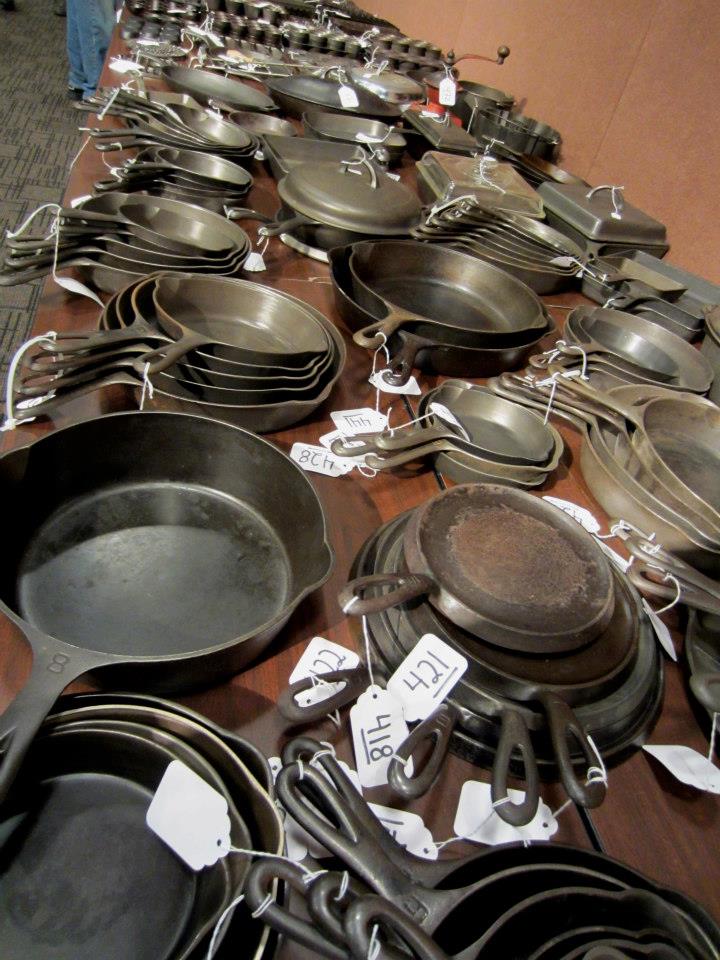
My next experience occurred at an auction house about 11 hours from home. There was to be a multi-day auction of vintage and antique cast iron cookware. I was very excited.
The iron offerings took my breath away – it was spectacular! Again, I was by myself and didn’t know a soul. This time, however, I was savvier about what I was looking for. At the time, I was selling a bit more 6 and had established a presence with my e-commerce business. I knew my customer base and what I could quickly sell, and for how much.
Back then, there were fewer vintage cast iron sellers than there are now, meaning there was less competition at the auction than today. From what I could tell, a few sellers and many collectors were in the crowd. Of course, some people just wanted to buy a piece or two for cooking or were there to experience an auction.
I was seated behind Harold Henry – who I didn’t then know – and he was bidding on and winning a lot of iron. The auctioneer called Harold by name. I could see that if Harold wanted a piece, he was going to get it.
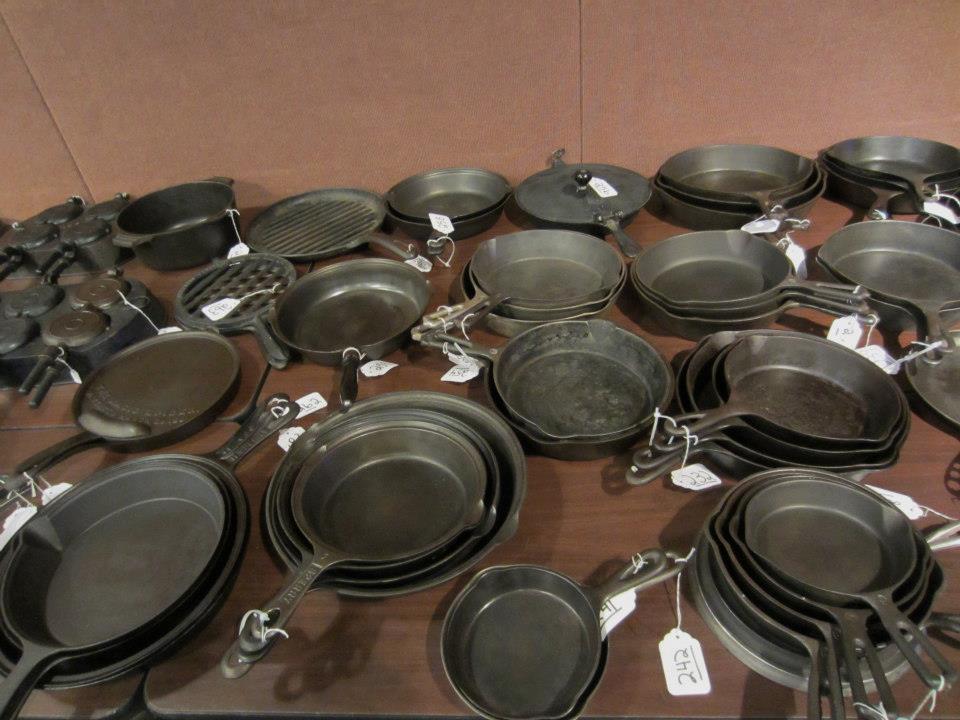
I previewed all the items I was interested in before the auction started. I carefully checked for cracks, repairs, warping, and any other imperfections. I also looked out for reproductions or recasts. Additionally, I took into account the time it would take to clean and re-season the pieces when deciding what I would pay for a piece.
The pieces were clean at this auction, so I knew they would require less work.7 I was generally willing to pay a higher price for an item as it would take less of my time before a piece was ready for resale.
I don’t remember exactly how many pieces I bought, but I bought more than enough. 8
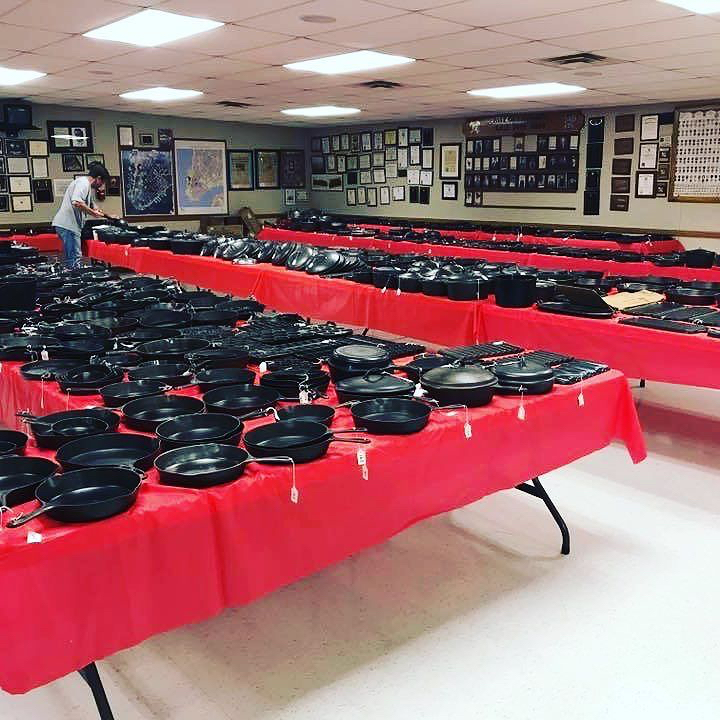
At the end of the “official” auction – which also had online bidders via Proxibid – those of us who were left gathered around a few tables where the auctioneer had placed many pieces that were “singles” (i.e. a waffle iron without a base) or considered to be less than optimal for one reason or another. Potential bidders checked out the pieces on the tables, and then the bidding began. The winning bidder could pick up as many pieces as they wanted for that winning price – i.e. if the high bid was $20, you could take as many pieces as you wanted for $20 each (e.g. 5 skillets for $100).
At one point, I stopped bidding at $25; someone overbid me and won with a bid of less than $30. That person snagged all of the decent Griswold large block logo skillets. I kicked myself that I didn’t go to $30.9
Tips for the vintage cast iron cookware auction
Enough of my mistakes! Now that I’ve regaled you with stories about a few things I learned the hard way about cast iron auctions, check out part II of my auction series, for Tips and Considerations for Your Cast Iron Auction Adventure!
- Another sizeable vintage cast iron auction is held at the Griswold & Cast Iron Cookware Association (GCICA) annual convention. There, you can see many serious enthusiasts get down to business to snag some highly collectible pieces.
- You can hunt many more online marketplaces now; eBay and Craigslist were the main forums when I began.
- Besides eBay, several sites allow you to search for cast iron coming up for online auction.
- The buyer’s premium is a charge tacked on to the winning bid price by the auction house. I have seen buyer’s premiums exceeding 25% of the purchase price. Bidding in person usually has a lesser buyer’s premium than bidding online.
- This lesson was hammered in on a different occasion when I purchased a 11″ x 14″ framed antique tapestry during an online auction. I paid about $20 plus the buyer’s premium for the tapestry. Shipping was quoted at over $100! I should have called in advance and obtained a shipping quote.
- I had started an e-commerce business restoring and selling fine vintage cast iron cookware
- Regardless of condition, I always stripped and re-seasoned before selling a piece. I wanted to accurately tell buyers what had been used to season a piece.
- I wrote a blog post about the prices I paid in 2012 for old cast iron cookware. It’s interesting to compare those prices to today’s pricing.
- This was when you could get a decent clean number 8 Griswold large block logo with a heat ring for around $25. It’s hard to imagine now, I know.
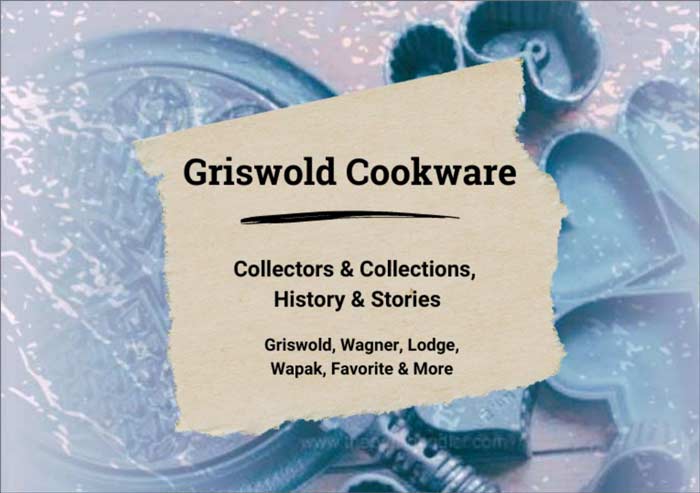


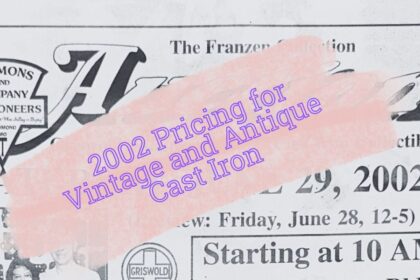
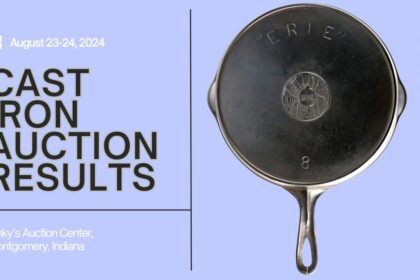
9 Comments
Pingback:
August 6, 2019 at 11:54 amPingback:
July 21, 2019 at 12:03 pmPingback:
July 11, 2019 at 11:17 amPingback:
May 19, 2019 at 8:36 pmPingback:
February 27, 2019 at 1:58 pmPingback:
October 13, 2018 at 9:27 amPingback:
October 10, 2018 at 1:48 pmPingback:
August 8, 2018 at 4:57 pmPingback:
May 18, 2018 at 3:54 pm